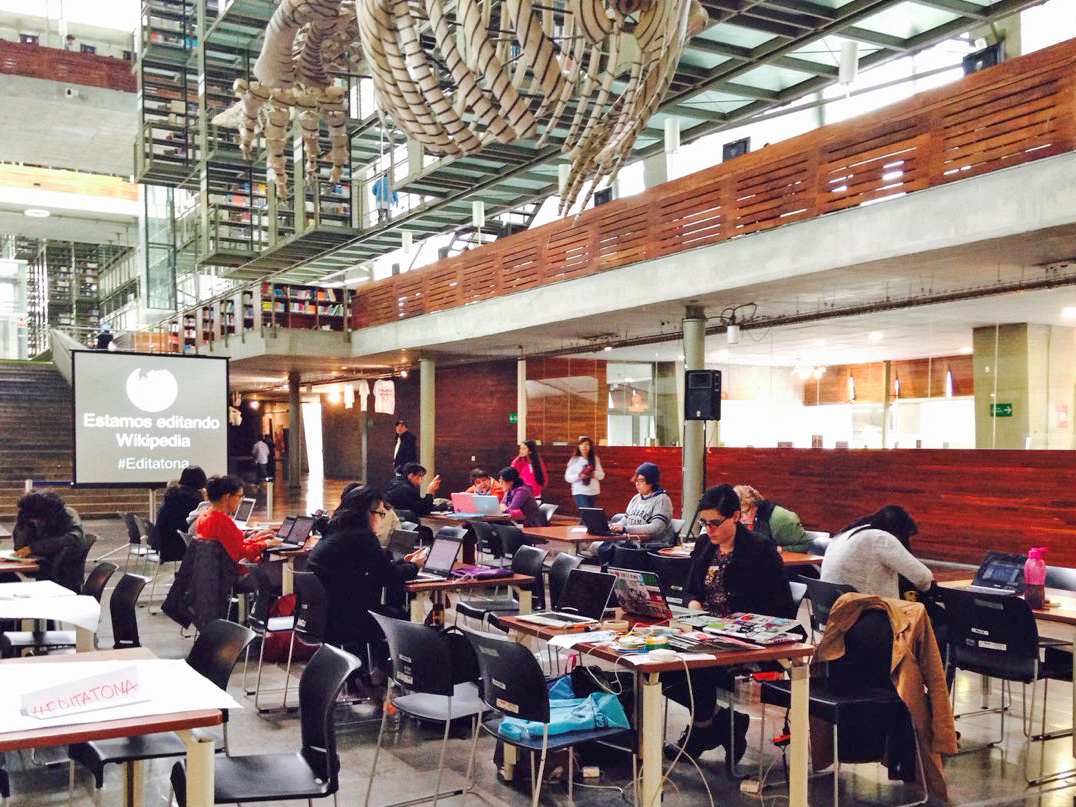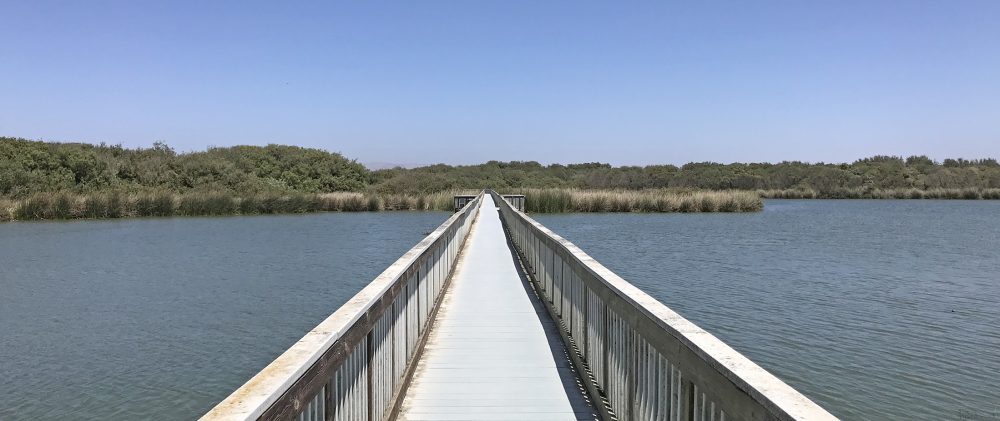The focus of Biblioteca Vasconcelos, Mexico City’s national library, resonated with me because of its lessons and implications for our spaces offering as much, if not more, of an emphasis on connections than collections. As Mathiasson and Jochumsen (2020) described this trend, “new programs and services and an increased involvement of the users are often explained as part of an overall development ‘from collections to connections’” (p. 364). Exemplifying this shift, Bibliotheca Vasconcelos was identified by Lehmann (2024) as an example of “reimagining the library of the future” in terms of design (p. 223).
There is a “500-seat auditorium,” and “spaces for adult education classes (ranging from Excel to pre-colonial history) were added by the directorship in recent years, and temporary exhibitions and spontaneous performances make full use of the promenade” (Carr, 2019). Elsewhere, “rooms along the sides of the library [were] filled with women knitting” (Wright, 2019). These manifestations of re-envisionment have proven appealing to a wider spectrum of users; as Carr (2019) noted, “more than half the visitors are millennials — the library’s base is growing.”

The second edition of the Editatona event is pictured at Biblioteca Vasconcelos in 2015. (Photo Courtesy of Wikimedia Commons, by ‘Wotancito’)
These ideas connect with real-world library service because LIS spaces are continually facing the challenge of how to make the most of spaces as community needs evolve, as patron habits tend to shift more toward digital or audiovisual means of story consumption as well as creation, and as users demand for libraries to remedy equity gaps in previously unconsidered ways. In the case of Biblioteca Vasconcelos, “a 2017 survey cite[d] the building’s spaces over use of its collection as the main reason people visit[ed]” (Carr, 2019).
While the stacks are, of course, plentiful, as Carr (2019) observed, Vasconcelos’ director is effectively and engagingly “using what limited resources the library has to host its visitors.” For Mexico City, this approach has fulfilled an organizational mission to forge equity. Alejandra Quiroz Hernández, the coordinator of educational services at Vasconcelos, commented to Hoenke (2018) that “libraries have to be acknowledged as fundamental public spaces that help to reduce the inequality gap” (p. 7).

José Gordon and Daniel Goldin give a presentation with Jimmy Wales in 2015 at Biblioteca Vasconcelos. (Photo Courtesy of Wikimedia Commons, by ‘Wikimedia México’)
These activities challenge outdated assumptions regarding library spaces as entirely quiet, hushed tombs for solitary, intentional reading of print. For example, Carr (2019) saw firsthand the modern-day lively engagement now typical at Vasconcelos: “Groups of teenagers practice dance routines up against the glass facades on the ground level, outside facing in, using the ground-floor promenade as involuntary audience. Musicians play in the garden. … Couples shoot Instagram Stories and old friends hold leisurely conversations, full volume, around large tables overlooking the city.”

Visitors gather under Gabriel Orozco’s whale bone sculpture in the lobby of Biblioteca Vasconcelos in 2015. (Photo Courtesy of Wikimedia Commons, by ‘Isha’)
Even so, however, new possibilities are sparked by the library’s architectural design, which can lead to a reimagined venue for even more traditional activities like reading. “When looking from inside out, library users enjoy a view into a beautiful garden. Its central linear atrium space connects all areas of this giant [400,000 square-foot] library” (Lehmann, 2024, pp. 237–238). In this sense, the natural light and open, ample spaces are not only conducive to improving rates of literacy but can invite and comfort learning experiences. Assessing my own professional goals, personally, regardless of the LIS institution in which I find myself working, I intend to carry this philosophy of participatory thinking and conception of spatial design into the day-to-day and long-term planning.
References
Carr, L. (2019, January 7). Revisit: Biblioteca Vasconcelos. The Architectural Review. https://www.architectural-review.com/buildings/revisit-biblioteca-vasconcelos
Hoenke, J. (2018). Activated by the community. Information Today, 35(8), 7.
Lehmann, S. (2024). Reimagining the library of the future: From social condenser and community hub to regenerative design. Public Library Quarterly, 43(2), 223–259. https://doi.org/10.1080/01616846.2023.2242626
Mathiasson, M. H., & Jochumsen, H. (2020). Between collections and connections: Analyzing public library programs in terms of format, content, and role and function. The Library Quarterly, 90(3), 364–379. https://doi.org/10.1086/708963
Wright, W. (2019, February 1). Biblioteca Vasconcelos: A futuristic architectural marvel. The Not So Innocents Abroad. https://www.thenotsoinnocentsabroad.com/blog/biblioteca-vasconcelos-a-futuristic-architectural-marvel

@sjsudon really appreciate your thoughts about library space and how design can be so impactful.